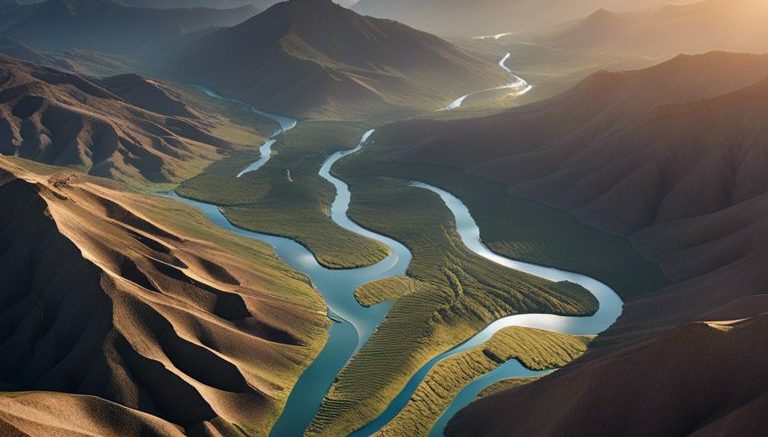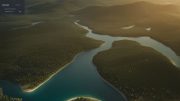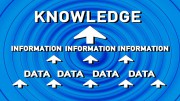With ESRI’s topographic mapping tools, understanding and analyzing terrain features and elevation levels becomes an efficient and insightful process. These tools provide detailed data and visualization capabilities that enable users to explore deep into the topography of any area, from mountains to valleys, and everything in between. By harnessing the power of ESRI’s topographic mapping tools, researchers, geologists, environmentalists, and outdoor enthusiasts can gain valuable insights into the intricacies of our planet’s diverse landscapes, allowing for informed decision-making and exploration.
Understanding Topography and Elevation
Fundamentals of Terrain Features
For a comprehensive understanding of topography and elevation, it is vital to grasp the fundamentals of terrain features. Any analysis of terrain begins with the recognition of basic landforms such as mountains, valleys, ridges, and plains. These features are critical in assessing the landscape and understanding how elevation changes across different areas.
Elevation Data Types and Sources
When delving into elevation data analysis, it is crucial to consider the various types and sources of data available. Terrain elevation can be represented in different formats such as digital elevation models (DEMs), digital terrain models (DTMs), and contours. Recognizing the differences between these data types is vital for accurate terrain analysis and mapping.
| Terrain | Elevation |
| Mountains | High |
| Valleys | Low |
| Ridges | Medium |
| Plains | Flat |
| Plateaus | High |
Sources
Various sources provide elevation data for analyzing terrain features and topography. These sources include satellite imagery, aerial photography, LiDAR data, and ground surveys. Recognizing the strengths and limitations of each data source is crucial for obtaining accurate and reliable elevation information for mapping and analysis purposes.
| Sources | Accuracy |
| Satellite Imagery | Medium |
| Aerial Photography | High |
| LiDAR Data | Very High |
| Ground Surveys | High |
| Drones | Medium |

ESRI’s Topographic Mapping Capabilities
ArcGIS: Key Features and Functions
Assuming you are interested in exploring ESRI’s topographic mapping tools, ArcGIS is a robust platform offering a wide array of features and functions.
- Ability to create custom maps
- Advanced terrain analysis tools
- Integration with various data sources
- Interactive 3D visualization
The versatility of ArcGIS makes it a powerful tool for professionals working with topographic data. The platform’s user-friendly interface and comprehensive toolkit cater to a wide range of mapping needs. The integration of spatial analysis tools enhances the accuracy and efficiency of analyzing terrain features and elevation. The platform offers both desktop and online versions, ensuring accessibility and flexibility for users.
Utilizing Digital Elevation Models (DEMs)
Any topographic analysis project requires a solid understanding of Digital Elevation Models (DEMs) and their role in mapping terrain features and elevation.
Plus, DEMs provide detailed information on surface elevation, slope, and aspect, enabling users to perform complex terrain analysis and visualization. By utilizing DEMs in conjunction with ArcGIS’s tools, users can create accurate and detailed topographic maps for various applications, including urban planning, environmental management, and natural resource assessments.
Practical Applications
Planning and Engineering
One of the key practical applications of ESRI’s topographic mapping tools is in urban planning and engineering projects. By utilizing detailed elevation data and terrain features provided by these tools, professionals can accurately assess and plan infrastructure developments, transportation networks, and construction projects. The ability to analyze terrain features such as slope, aspect, and elevation enables engineers to make informed decisions to optimize designs and minimize environmental impacts.
Environmental Research and Conservation
Environmental researchers and conservationists benefit greatly from ESRI’s topographic mapping tools for studying and preserving natural ecosystems. These tools offer in-depth insights into the landscape, helping experts identify critical habitats, assess vegetation cover, and monitor changes in land use over time. By utilizing these mapping tools, researchers can better understand the effects of human activities on the environment and implement effective conservation strategies to protect biodiversity.
To research further into environmental research and conservation, experts can overlay other datasets such as land cover classifications, hydrological information, and climate data onto the topographic maps. This integrated approach allows for a comprehensive analysis of environmental factors and aids in making informed decisions for sustainable land management practices and biodiversity conservation efforts.
Advanced Techniques and Strategies
Many professionals and researchers utilize advanced techniques and strategies when analyzing terrain features and elevation data using ESRI’s topographic mapping tools. Here are some key points to consider:
- Multi-scale Analysis: Utilize multiple scales to examine terrain features in detail.
- Aspect Analysis: Identify slopes, direction, and potential solar radiation impact.
- Hydrological Modeling: Analyze water flow patterns and watershed delineation.
- Terrain Classification: Classify terrain types based on elevation and slope characteristics.
Analyzing Spatial Patterns and Slope
Slope analysis plays a crucial role in understanding the terrain’s characteristics and identifying areas prone to erosion or landslides. By examining spatial patterns and slope variations, analysts can make informed decisions regarding land use planning, infrastructure development, and natural resource management.
3D Visualization and Terrain Analysis
Spatial analysis tools allow users to visualize elevation data in a three-dimensional (3D) format, providing a more immersive experience when exploring terrain features. By integrating terrain analysis techniques with 3D visualization tools, researchers can gain a deeper understanding of topographic structures, visibility analyses, and terrain morphology.
Final Words
Upon reflecting on the analysis of terrain features and elevation using ESRI’s topographic mapping tools, it is evident that these tools provide invaluable insights for various industries, from urban planning to environmental management. By leveraging the power of Geographic Information Systems (GIS), users are able to accurately assess terrain characteristics, identify potential risks, and make informed decisions. Understanding how to interpret contour lines, spot elevations, and slope gradients can lead to more efficient project planning and resource management. Overall, ESRI’s topographic mapping tools are imperative for anyone looking to explore and analyze the diverse landscapes of our planet.






Be the first to comment on "Analyzing Terrain Features And Elevation With ESRI’s Topographic Mapping Tools"